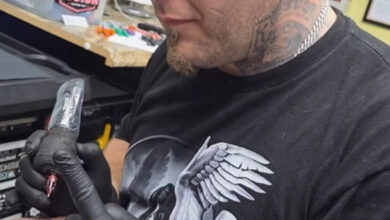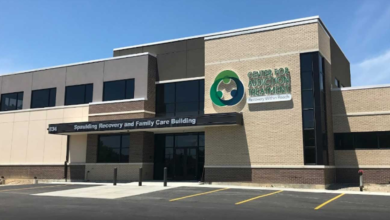What Are the Signs of Breast Damage from Pumping?

Breast pumping is an essential tool for many mothers, offering flexibility and allowing them to continue providing breast milk even when they’re not able to breastfeed directly. However, pumping can sometimes lead to breast damage if not done correctly. Recognizing the signs of breast damage from pumping is crucial for maintaining breast health and ensuring a comfortable and effective feeding experience. Here’s what you need to know about the potential signs of breast damage from pumping and how to address them.
The Signs of A Breast Condition from Pumping
I am listing the signs of breast conditions that might have been acquired from pumping the mother’s milk.
Nipple Pain and Soreness
One of the most common signs of breast damage from pumping is persistent nipple pain and soreness. While some discomfort is normal when starting to pump, especially if you’re new to it, ongoing or severe pain may indicate a problem. This can occur if the pump’s suction is too strong, if the flanges (the part of the pump that fits over the breast) are the wrong size, or if the pumping technique is incorrect.
To prevent and address nipple pain, ensure that the pump’s suction level is set to a comfortable setting. It’s also essential to use properly fitted flanges; if they’re too small or too large, they can cause friction and pain. Applying a nipple cream or lanolin can also help soothe sore nipples.
Cracked or Bleeding Nipples
Cracked or bleeding nipples are more severe signs of breast damage. This can happen if the nipples are subjected to excessive suction or if they’re repeatedly rubbed against improperly fitted flanges. Over time, this can lead to open sores, making pumping extremely painful and increasing the risk of infection.
If you notice cracks or bleeding, stop pumping immediately and allow your nipples to heal. Switching to a lower suction setting, using a different flange size, or adjusting your pumping technique can help prevent further damage. In the meantime, consider hand-expressing milk or breastfeeding directly if it’s not too painful.
Blisters and Bruising
Blisters and bruises on the nipples or breasts are clear signs of improper pumping. These can result from excessive suction, poorly fitting flanges, or using the pump for too long. Blisters can be especially painful and may pop, leading to further irritation and potential infection.
To prevent blisters and bruising, ensure that the flanges fit correctly and that the suction level is not too high. It’s also important not to pump for too long—typically, 15-20 minutes per session is sufficient. If you develop blisters or bruises, give your breasts a break from pumping, and treat the affected area with a soothing, breast-safe ointment.

Blocked Milk Ducts
Blocked milk ducts are another sign of breast damage from pumping. These occur when milk isn’t fully drained from the breast, leading to a buildup that can cause a painful lump. Blocked ducts can result from improper flange fit, insufficient suction, or pumping in a position that doesn’t fully empty the breast.
If you notice a hard, tender lump in your breast, it may be a blocked duct. To treat it, try massaging the area gently while pumping or breastfeeding, apply warm compresses to help with milk flow, and ensure that you’re emptying your breasts during each session. If the lump doesn’t go away, it’s important to seek medical advice, as a blocked duct can lead to mastitis, a more serious breast infection.
Mastitis
Mastitis is a serious condition that can develop if blocked milk ducts are not addressed promptly. It’s an infection of the breast tissue that causes pain, swelling, warmth, and redness. Other symptoms may include fever, chills, and flu-like symptoms. If you suspect mastitis, it’s crucial to seek medical attention immediately. Antibiotics are usually required to treat the infection, and you may need to rest and apply warm compresses to the affected area. Continuing to pump or breastfeed (if possible) can help clear the infection by keeping the milk flowing, but it’s essential to do so gently and with proper technique to avoid worsening the condition.
Engorgement
Breast engorgement occurs when the breasts become overly full of milk, leading to swelling, pain, and firmness. This can happen if pumping sessions are skipped if the breasts are not fully emptied during pumping, or if there is an issue with milk drainage. To prevent engorgement, maintain a regular pumping schedule and ensure that your breasts are emptied thoroughly during each session. If engorgement occurs, applying cold compresses, gently massaging the breasts, and pumping more frequently can help relieve the discomfort.
Redness and Swelling
Redness and swelling in the breasts or around the nipples can indicate irritation or infection caused by pumping. This may result from improper flange fit, excessive suction, or an allergic reaction to pumping accessories. If you experience redness and swelling, check the fit of your pump parts and adjust the suction settings. It’s also important to clean your pump components thoroughly to prevent bacteria buildup that could lead to infection.
Final Thoughts
Pumping breast milk is a valuable tool for many mothers, but it’s important to be aware of the potential signs of breast damage to maintain breast health and comfort. If you experience any of these symptoms, take action to address them promptly. Adjusting your pumping technique, using the right equipment, and ensuring proper hygiene can help prevent damage and make your pumping experience more positive. If you’re unsure or if symptoms persist, consult a lactation consultant or healthcare provider for guidance. Lastly, if you see signs of breast tissue damage from pumping, then you’d be happy to know that Eufy is offering a breast pump called the Eufy Breast Pump S1 Pro that is extremely comfortable and provides an app integration that helps you manage the milk it collects.




